Placeholder text…
Donation Test
2024 St. Paul Oktoberfest Fanklub
Thank you for supporting the GAI by becoming a St. Paul Oktoberfest Fanklub member! You can RSVP for our VIP Bavarian Breakfast on
Schnupperkurs: Sample German Language Class
Not sure if you want to commit to a 12 week German language course? Join us for Schnupperkurs or a sample German Language class on January 2, 2025 from 6-7 pm.
The cost is $10 and can be used towards your language course fee. Register here.
Tikkun olam—the legacy of Fred Amram
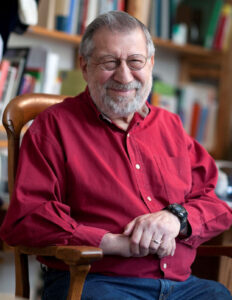 On February 13, I learned of the passing of my dear friend, Fred Amram. Many of you perhaps had the opportunity to meet Fred, as for the past five years, he has been a frequent guest and lecturer at the Haus. Fred was most notably known as a Holocaust survivor, eager to share his experience fleeing Germany after the Nazi invasion of his hometown, Hannover, and beginning a new life in the U.S. When sharing his story, Fred always challenged his audience to be up-standers, to notice grave injustices both locally and globally, and to have the courage to speak out and take action. At age 89, Fred was still a passionate voice for social justice. It is from him that I first learned of tikkun olam, a Jewish concept defined by acts of kindness performed to repair a broken world.
On February 13, I learned of the passing of my dear friend, Fred Amram. Many of you perhaps had the opportunity to meet Fred, as for the past five years, he has been a frequent guest and lecturer at the Haus. Fred was most notably known as a Holocaust survivor, eager to share his experience fleeing Germany after the Nazi invasion of his hometown, Hannover, and beginning a new life in the U.S. When sharing his story, Fred always challenged his audience to be up-standers, to notice grave injustices both locally and globally, and to have the courage to speak out and take action. At age 89, Fred was still a passionate voice for social justice. It is from him that I first learned of tikkun olam, a Jewish concept defined by acts of kindness performed to repair a broken world. 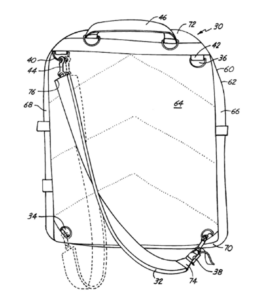
Fred was a wonderfully multifaceted person. He retired from the University of Minnesota as “Professor of Creativity.” In addition to teaching and writing, Fred was also an inventor. I had the privilege of trying on the Amram 5-in-1 Backpack, a backpack he designed for college students to better distribute the weight in their schoolbags while trekking across campus. Fred never stopped noticing problems he could help solve.
I spoke with Fred just two weeks before he died. Our events team had a Zoom meeting with him where we started to plan how the GAI could honor Holocaust Remembrance this year. Fred was eager to lead a writing workshop, teaching participants how they could record their family’s heritage through storytelling. Fred’s memoir, We’re in America Now, a Survivor’s Stories, has been published and his wife Sandra Brick, a gifted textile and media artist, has created an accompanying exhibit, Lest We Forget, a Survivor’s Stories, recently on exhibit at the Twin Cities German Immersion School. We still plan to host the storytelling workshop with Sandra, likely this fall, knowing how pleased he would be that we too believe that every family’s story is worth saving and passing down to the next generation. 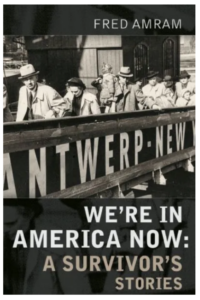

Jeana Anderson, GAI Executive Director
Updates from Zell, Germany
By GAI Board Chair Danika Hoffmann
Hello from Zell!
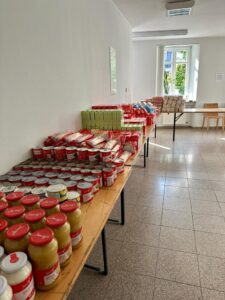
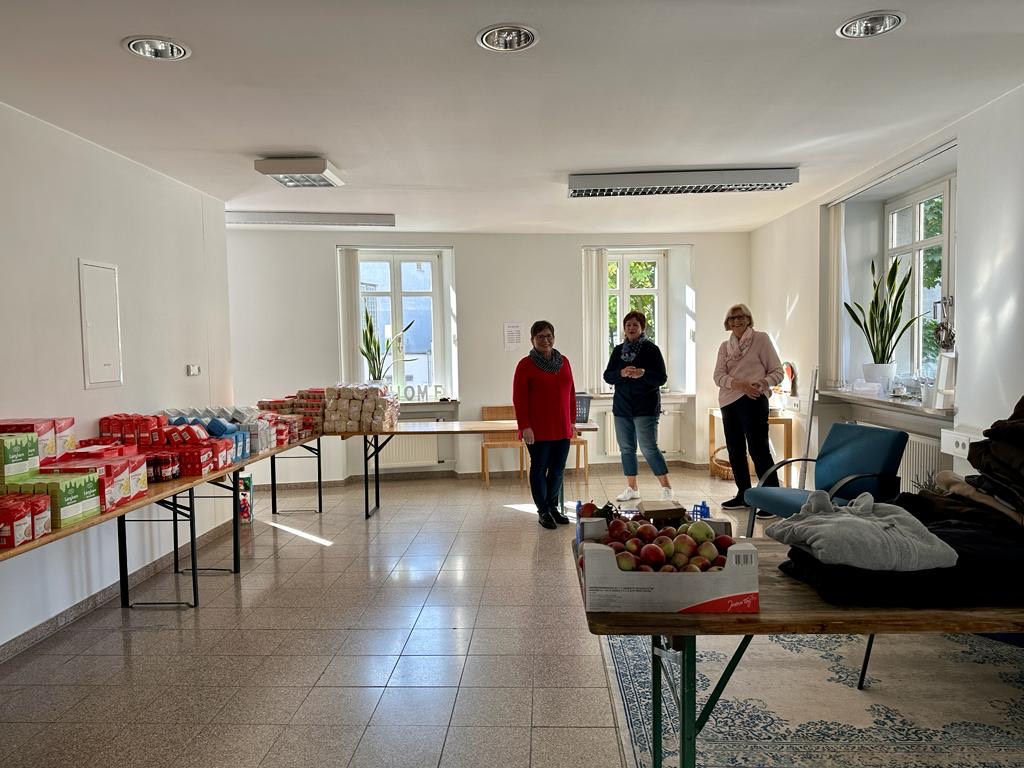
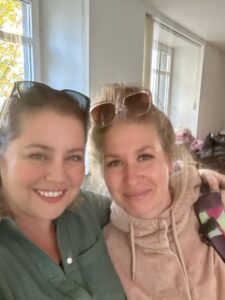
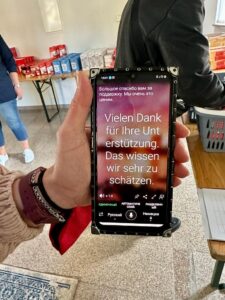
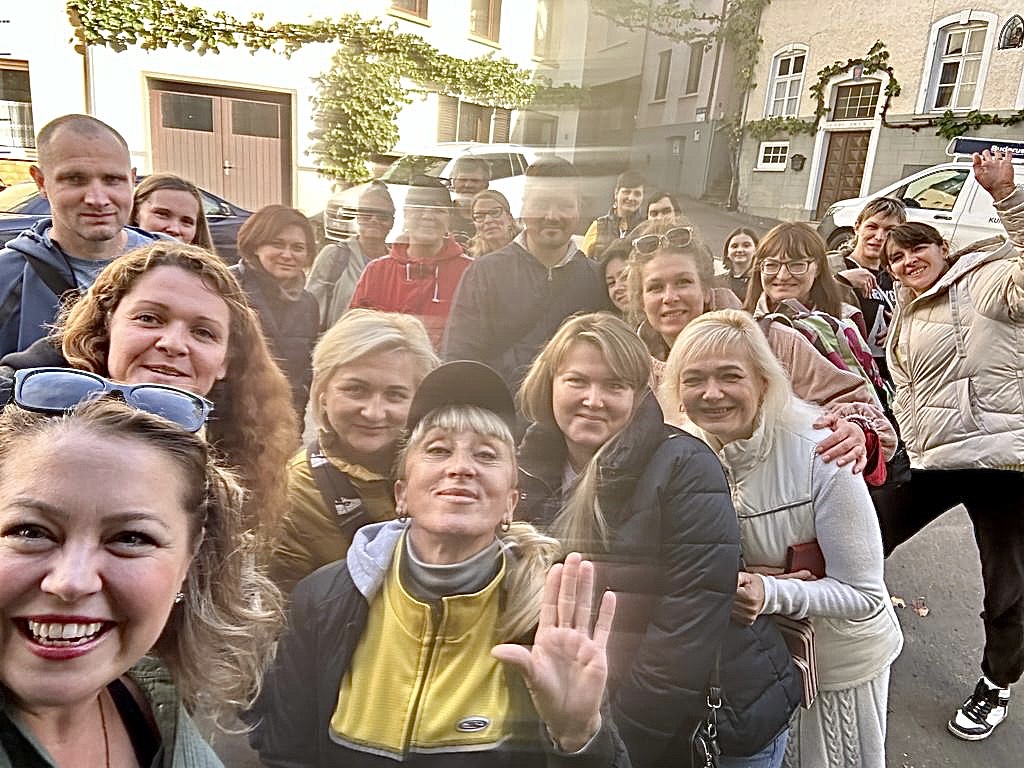
Communities for Ukraine updates
The outpouring of support from the GAI community has been impressive! We more than doubled our goal of $20,000, ending with a total of almost $50,000! The donations have already been used to buy appliances and stock food shelves, with weekly updates coming from the Bürgermeister’s office in Zell.
GAI Board Chair Danika Hoffmann visits Zell
We wanted to provide an update about what your donations have made possible in Zell, Germany—the small town along the Mosel river that has become a prime destination for Ukrainian refugees.
Rhineland-Pfalz (the state in which Zell is located) has taken in over 40,000 Ukrainian refugees, nearly half of whom are children. Zell’s regional district (the Landkreis Cochem-Zell) is supporting more refugees per capita than any other region in the state. The donations from our GAI community have made a tangible impact on the area’s ability to provide safe shelter for refugees and their families.
GAI Board Chair Danika Hoffmann was in Zell in June to meet with Mayor Döpgen and see first-hand what your donations have made possible.
In addition to the renovation and furnishing of homes, our donations have supported a new food shelf, organized and led by Zell’s Second Councillor Rosemarie Mandernach. Ms. Mandernach identified a centrally located space, stocked it with food staples, and staffed it to operate every Tuesday. Each week as the word spread about the food shelf more and more families arrived.
It now serves over 150 families, many traveling to Zell by bus. In addition to critical staples like bread, canned goods and fruit, a chocolate bar is offered to every child—and last week there was an additional treat of American candy sent by the GAI. This food shelf is 100% supported by our donations, and because of your generosity the refugees can continue to count on this vital support.
The people of Zell—both Germans and Ukrainians—now know they have many friends in Minnesota, standing with them in steadfast solidarity and a call for peace.
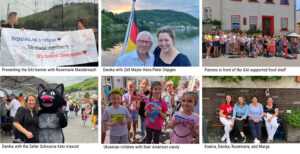
June 18, 2022
Thanks from the community of Zell
A note from Rosemarie Mandernach about the food shelf is one of many expressions of thanks from Zell:
“We took care of more than 100 Ukrainian people, young ladies with children, old people, families with 5 or 6 members. All of them are very…grateful. We are very proud to do this kind of work [and] we are grateful [to you] too.”
Besides heartfelt thanks from the community of Zell, Bürgermeister Döpgen shared a touching letter written in German by Ksenia, a Ukrainian mom of two boys. She thanks him and the people of Zell for not only providing a much needed washing machine, but also for helping them feel welcome and making their world bright again. Read the full letter here.
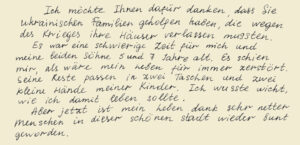
GAI volunteers travel to Zell
In late May, two members of the GAI Haus & Grounds team, Marty and Penny Loso, arrived in Zell to help with apartment renovations. Marty updated us on their stay: “This morning we met the Baumeister, Franz-Josef Nolden. In our car, we followed him across the river to an old schoolhouse halfway up the hill. Penny and I are renovating about 8 rooms on the second floor. Today we stripped everything off of the walls, cleaned them, replaced trim and patched any holes (some small and some LARGE). Penny picked up and bagged lots of junk/litter, swept (several times) and washed windows. Tomorrow we begin to paint.”
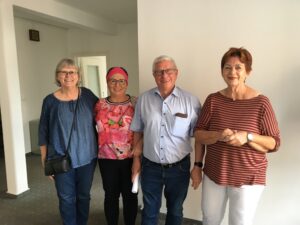

It’s Spargel season!
It’s that special time of year dedicated to celebrating Germany’s favorite vegetable.
By Audra Grigus
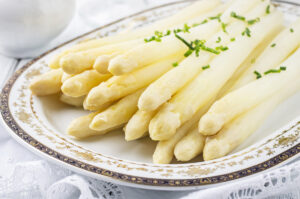
The beloved Spargelzeit (asparagus season) is upon us, a time when Germans eat as much “white gold” as they can before the season ends.
The Spargel season is relatively short in Germany, running from mid-April to June 24. If Spargel is harvested too late in the season, the root may be killed by the harsh summer heat. It is best if the asparagus root stays protected in the ground for the next season. Older Spargel farmers have a saying, “When the cherries get red, leave the asparagus in its bed.”
But… Why is Spargel white and why do Germans love it so much?
The main difference between the thin, green stalks Americans are accustomed to and the thick, tough and flavorful stalks the Germans adore is how they grow. Green asparagus grows when it is exposed to light, like traditional plants. White asparagus grows under ground, so the lack of photosynthesis means no green color.
Almost one fifth of German farmland is used to grow asparagus. This makes sense, however, considering that in 2019, Germans ate 1.7 kg of fresh asparagus per capita. Germans have been known to pay more per kilo for it than meat.
White asparagus is more expensive than the green variety in large part due to the time and energy required to harvest it. The spears need to be carefully removed from the dirt and cut by hand with a special shaped knife. The shoot must be cut about a foot below the surface—if it is exposed to sunlight it will turn green or purple. Not only is the harvesting process more labor intensive, the white asparagus requires special steamers so that it doesn’t break, special tongs to get it out of the pot and peelers to take off the hard outer layer.
Spargel was just as loved by the Romans as it is today by the Germans. It is said that Romans used to freeze the white asparagus in the Alps for the feast of Epicurious, transporting it there by fast chariots and runners. Asparagus became a forgotten vegetable with the fall of the Roman Empire. As monasteries were built in Germany, Spargel made its way back into agricultural rotation for medicinal purposes. It wasn’t until Germany was formally reintroduced to the vegetable by France in the 16th century that it made its way back onto the dinner tables of Germans. Asparagus arrived in the city of Beelitz, Brandenburg, in 1861 and quickly became a hot commodity once again with 1,500 acres under cultivation by 1937.
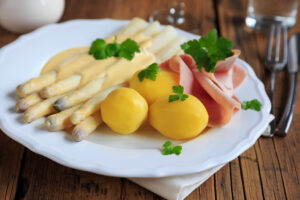
Within the season, many different areas, most notably Baden Wurttemberg, Lower Saxony and the city of Beelitz, have different Spargel festivals. Many celebrations include the crowning of a Queen of Asparagus, beer drinking and indulging in a variety of Spargel dishes. We hope you will one day get a chance to take part in joyous festivities and meals this time of year brings!
Germany’s Halloween in April — Walpurgisnacht
Welcoming the new spring season the witchy way.
By Audra Grigus
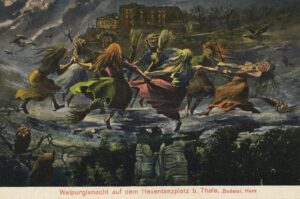
While many are accustomed to celebrating all things spooky in October for Halloween, Germany’s holiday of Walpurgisnacht brings out witchy festivities half a year early.
Walpurgisnacht, also known as Walpurgis Night, Saint Walpurgis Night and Saint Walpurga’s Eve, is a celebration that takes place every year on the night of April 30
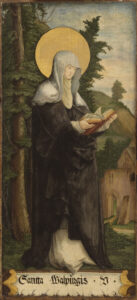
and into the early morning of May 1. Initially it was a night to pay tribute to the Abess Walpurga, who had been known in the 8th century for warding off pests, illness and witchcraft. She was celebrated on May 1 due to a medieval record indicating that as the date of her canonisation. Later, like many festivals and holidays, the celebration was influenced across Europe by pagan practices, local folklore and myths. While missionaries were trying to dispel pagans and their believed witchcraft, the pagans used the celebration of Saint Walpurga as a facade for their own enchanted welcoming of spring — it is only coincidence that the celebration of Saint Walpurga fell on this date and became a useful deception device for those she was working against.
Through time, Walpurgisnacht has shifted and it is in some ways seen as a “second Halloween.” Both Halloween and Walpurgisnacht have their origins in pagan celebrations that mark the changing of the seasons, and were important markers for when it was believed that the veil between the spirit world and ours was the thinnest.
Certain traditions remain from the medieval period, such as hanging sprigs of foliage, dressing up in costumes and leaving offerings of Ankenschnitt (bread spread with butter and honey) for phantom hounds. For centuries witches have pilgrimaged and held a large celebration on the Brocken, the highest of the Harz Mountains in north central Germany.
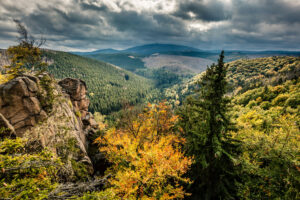
New Walpurgisnacht customs include firework shows, singing folk songs and enormous bonfires to burn wooden witches. When the flames die down from the bonfires, lovers will jump over the fire together in a practice called the “corn jump.”
The local towns and villages surrounding the Harz Mountains have grown into their identity as a wild, magical place — even Faust’s mentioning of the witches of Brocken and their “a-farting” brings great pride.
Now to the Brocken the witches ride;
The stubble is gold and the corn is green;
There is the carnival crew to be seen,
And Squire Urianus will come to preside.
So over the valleys our company floats,
With witches a-farting on stinking old goats.
From Faust, by Johann Wolfgang von Goethe.
Versions of the holiday are also celebrated in the Netherlands, Slovakia, Slovenia, Sweden, the Czech Republic, Lithuania, Finland and Estonia. If you’re interested in taking part in some witchy activities in your next springtime visit to Germany, the biggest celebrations take place in the towns closest to the Brocken, such as Goslar, Thale and Wernigerode. And if you’re feeling up for adventure, you can make the pilgrimage to Saint Walpurga’s tomb in Eichstätt.
Every day is Earth Day in Germany
Germany’s climate targets are only about a decade away from being met.
By Audra Grigus
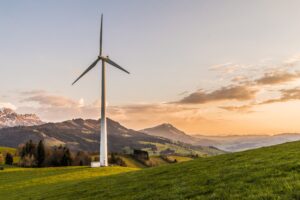
Germany is often associated with sustainability and being a “green” country, and for good reason!
- Its public transportation system is easy to use and accessible.
- Biking is an easy and normalized form of transportation.
- Most cities have an abundance of green spaces.
- The waste sorting system is impressive and effective (just don’t mess it up!).
- Around 40% of the country’s energy production is renewable energy.
- Berlin Fashion Week has been the hub for innovative sustainable fashion for over a decade.
While its efforts toward a green future are noble and should be admired, Germany still ranks as the number one producer of CO2 emissions in Europe. Germany’s output of 604.8 million metric tons in 2020 may seem like a lot, but it is actually 8% less than what was produced in 2019. However, emissions did pick up again in 2021 after the COVID-19 related dip.
According to the Fraunhofer Institute, 46% of electricity generated in 2021 came from renewable energy sources. Solar and wind power sources have been a main focus—in fact, the city of Freiburg produces the same amount of solar power as the UK. Outside of renewable energy, 41% of electricity was generated by coal, natural gas, and fossil fuels, and the other 13% came from nuclear power.

By the end of 2022, Germany intends to shut down its remaining three nuclear power plants, Emsland, Isar and Neckarwestheim, as part of their initiatives to move toward renewable energy use.
After missing its climate target for 2021, and the prediction that it will likely not meet the 2022 target, the new Bundestag is working harder to meet the goals of reducing Germany’s greenhouse gas (GHG) emissions by at least 65% by 2030 and use only renewable energy by 2035.
Germany’s sustainability policies today are heavily guided by the United Nations Sustainable Development Goals (SDGs).
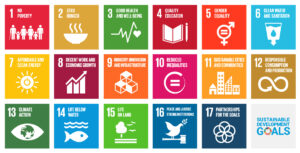
For those unfamiliar, the SDGs are an urgent call to action for peace and prosperity for people and the planet, now and into the future. The Germanic-American Institute also uses the SDGs as a guideline for the advocacy work that we do.
Germany is focusing on work in 6 main areas that utilize most of the SDGs:
- Human well-being and capabilities, social justice (SDGs 3, 4, 5, 8, 9, 10)
- Climate action and energy transition (SDGs 7, 13)
- Circular economy (SDGs 8, 9, 12)
- Sustainable building and transport (SDGs 7, 8, 9, 11, 12, 13)
- Sustainable agricultural and food systems (SDGs 2, 3, 8, 12, 13)
- A pollutant-free environment (SDGs 6, 8, 9, 14, 15)
Germany has much work to do in order to meet its environmental targets, but thankfully the strategic implementation of the SDGs and focus on renewable energy have proven fruitful thus far. German GHG emissions have decreased by 40.8% since 1990, a motivating sign of the green future that is to come.